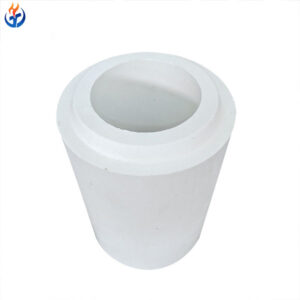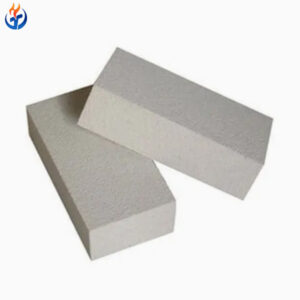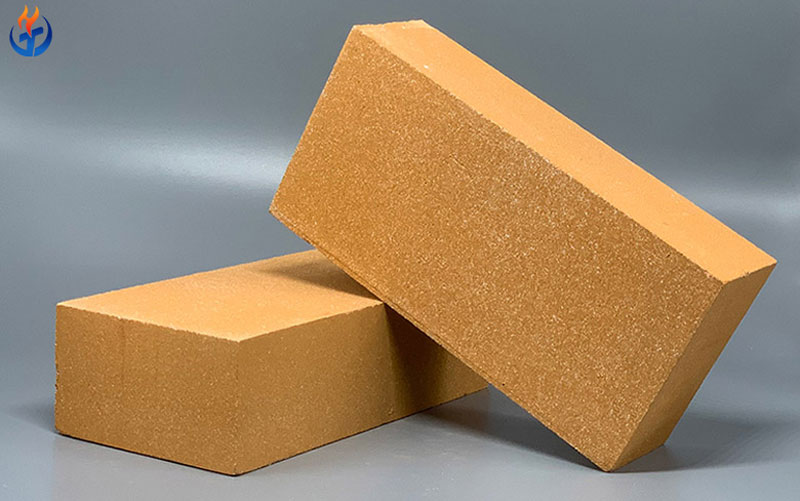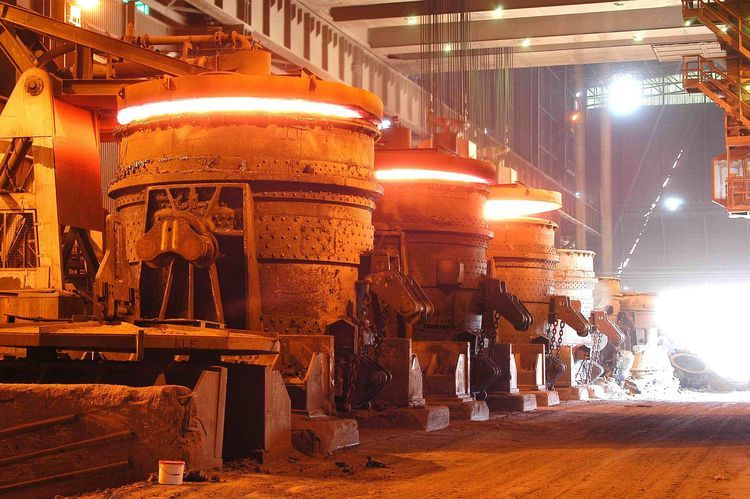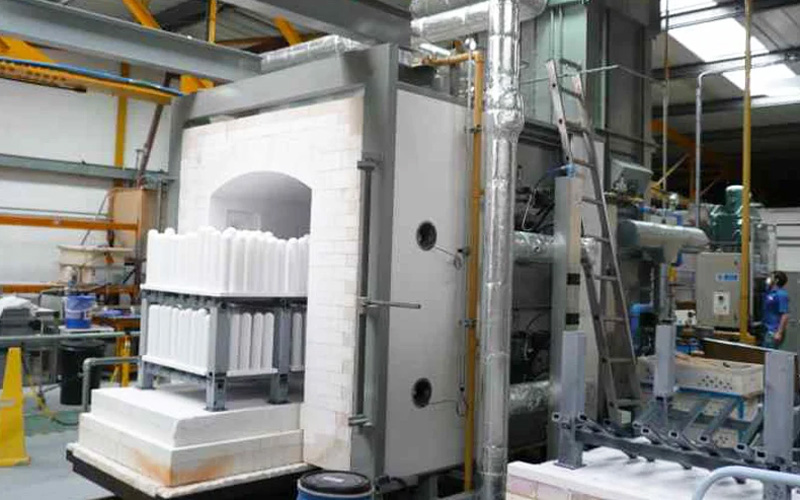In the steel industry, ladles play a critical role in transporting and holding molten steel during production. These vessels are exposed to extremely high temperatures—often reaching up to 1800℃—as well as intense mechanical shocks, slag erosion, and chemical reactions. To ensure performance and durability, the lining of a ladle must be constructed from high-quality refractory materials. Among these, refractory bricks are the most widely used due to their ability to withstand thermal stress, chemical attack, and wear.
This article explores the types of refractory bricks used in ladles, their key properties, and how to select the right lining materials for maximum performance and cost-efficiency.
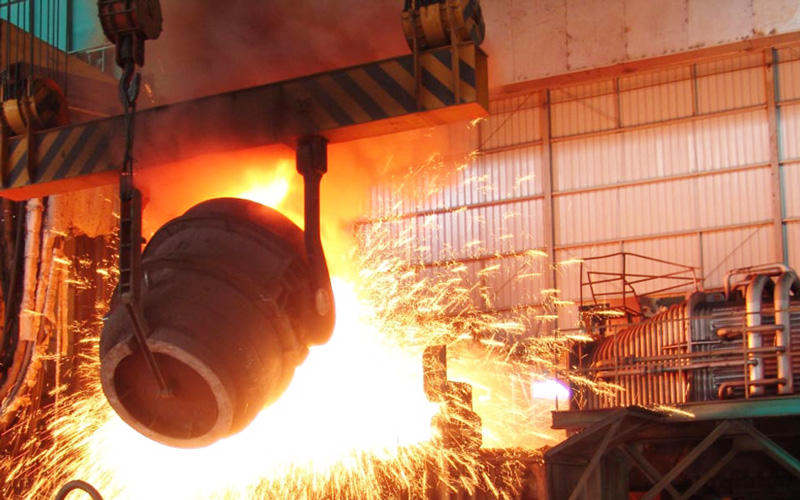
Importance of Ladle Linings
The lining of a ladle is its protective shield, ensuring the steel shell does not suffer damage from molten metal or slag. The main functions of ladle linings include:
Withstanding extreme heat: Operating temperatures can exceed 1800℃, requiring materials with exceptional refractoriness.
Resisting chemical corrosion: Molten steel and slag contain aggressive compounds that can erode the lining.
Minimizing thermal shock damage: Sudden changes in temperature occur during tapping, pouring, and preheating cycles.
Enhancing ladle service life: Durable linings reduce maintenance frequency and operational costs.
Typically, a ladle lining is divided into three key sections:
Working Layer: The inner layer that directly contacts molten steel and slag.
Slag Line: The region most exposed to chemical corrosion and mechanical abrasion.
Bottom Layer: The base of the ladle, which must withstand high static loads and thermal stress.
Types of Refractory Bricks for Ladles
Various refractory bricks are available for ladle applications, each designed to handle specific conditions. Below are the most commonly used options:
1. High Alumina Refractory Bricks
High alumina bricks are neutral refractory materials with a high content of alumina (Al₂O₃), typically ranging from 50% to 80%. These bricks are prized for their excellent chemical stability, allowing them to resist both acidic and basic slags.
Key Properties:
High refractoriness (up to 1790℃–1850℃)
Good corrosion resistance against acidic and alkaline slags
Excellent thermal stability and mechanical strength
Applications:
High alumina bricks are widely used in ladle working layers and bottom linings because of their ability to resist molten steel penetration and thermal cycling damage.
2. Magnesia Carbon Bricks
Magnesia carbon bricks combine magnesia (MgO) with carbon (graphite) to deliver outstanding thermal shock resistance and high-temperature strength. The carbon content helps reduce wetting by molten slag, while magnesia offers excellent refractoriness.
Key Properties:
High resistance to thermal shock and slag erosion
Low thermal conductivity, reducing heat loss
Good spalling resistance, extending service life
Applications:
These bricks are commonly used in slag lines and working layers, where the lining faces extreme thermal and mechanical stresses. They are especially suitable for ladles in continuous casting operations.
3. Magnesia Alumina Spinel Bricks
Magnesia alumina spinel bricks are developed to improve the spalling resistance and structural integrity of ladle linings. They combine the benefits of magnesia and alumina, forming a spinel phase that enhances thermal shock resistance.
Key Properties:
Superior resistance to peeling and thermal shock
Better abrasion resistance than magnesia carbon bricks
Stable performance under extreme temperature fluctuations
Applications:
These bricks are ideal for ladle lining hot zones, including working layers, slag lines, and transition areas where temperature and chemical attacks are severe.
4. Fire Clay Bricks
Fire clay bricks are the most widely used refractory materials due to their cost-effectiveness and good thermal performance. These bricks typically contain 30–45% alumina, which provides sufficient refractoriness for general ladle applications.
Key Properties:
High refractoriness (up to 1690℃–1730℃)
Adequate thermal shock resistance
Economical and widely available
Applications:
Fire clay bricks can be used in almost every part of the ladle, including working layers, backup linings, and bottom areas. However, they are less resistant to slag corrosion compared to high alumina or magnesia-based bricks.
5. Silica Refractory Bricks
Silica bricks are acidic refractories made from high-purity quartz. They are known for their excellent ability to withstand acidic slags and high-temperature strength, but they are less effective against basic slags.
Key Properties:
Excellent resistance to acid slag corrosion
High thermal strength and low creep at elevated temperatures
Good thermal shock resistance in low-temperature ladle areas
Applications:
Silica bricks are typically used in non-critical ladle sections, such as furnace doors, viewing holes, or areas exposed to lower thermal and mechanical loads.
Alternative: Castables for Ladle Linings
In addition to bricks, refractory castables are also widely used in ladle linings. These monolithic materials can be poured, gunned, or vibrated into place, providing a seamless structure that reduces joint failures.
Advantages of Castables:
Easier installation and repair compared to bricks
Better adaptability to complex ladle shapes
Reduced heat loss due to fewer joints
However, castables require longer curing and drying times before use, making them less convenient for urgent repairs.
Factors to Consider When Selecting Refractory Bricks for Ladles
Choosing the right refractory bricks for ladle applications depends on multiple factors, including:
Operating Temperature: Ensure the chosen brick can withstand peak operating temperatures of up to 1800℃.
Slag Composition: Acidic, basic, or neutral slag requires corresponding refractory types.
Thermal Shock Resistance: High resistance to temperature fluctuations reduces spalling and cracking.
Mechanical Strength: Bricks must withstand the mechanical impact of molten steel pouring and slag movement.
Service Life vs. Cost: While premium bricks last longer, fire clay bricks may be preferred for lower-cost operations.
Conclusion
The lining of a ladle is one of the most critical factors determining its performance, safety, and service life. High alumina bricks, magnesia carbon bricks, magnesia alumina spinel bricks, fire clay bricks, and silica bricks each offer unique advantages depending on temperature, slag composition, and operational requirements.
At Xintai Refractory, we provide high-quality refractory solutions tailored to your steelmaking operations. Our experts can evaluate your ladle conditions and recommend the optimal combination of refractory bricks—or castables—for maximum efficiency and cost savings.
Is your ladle lining due for inspection or replacement? Contact Xintai today for professional advice and reliable refractory products that keep your equipment running at peak performance.

